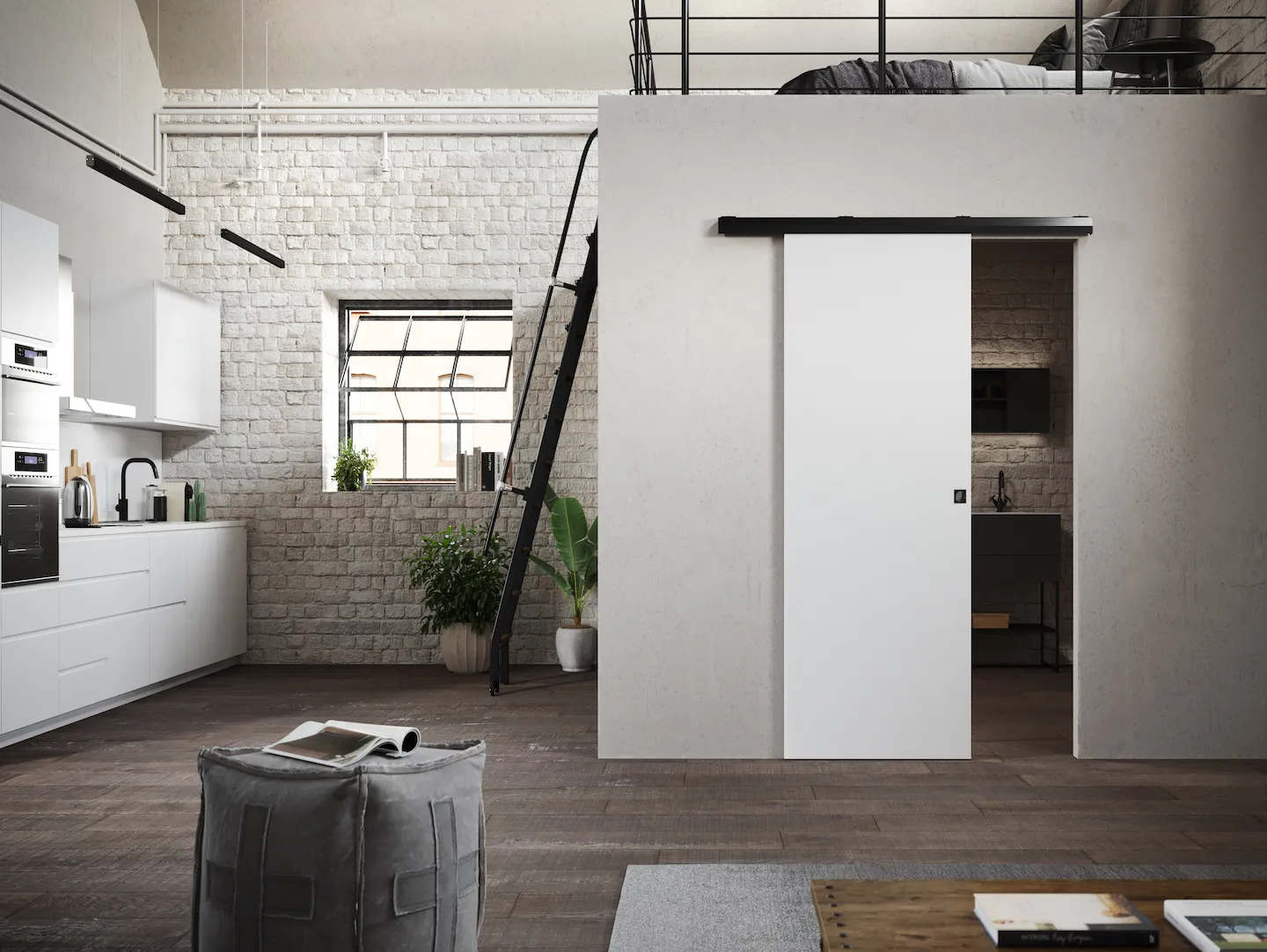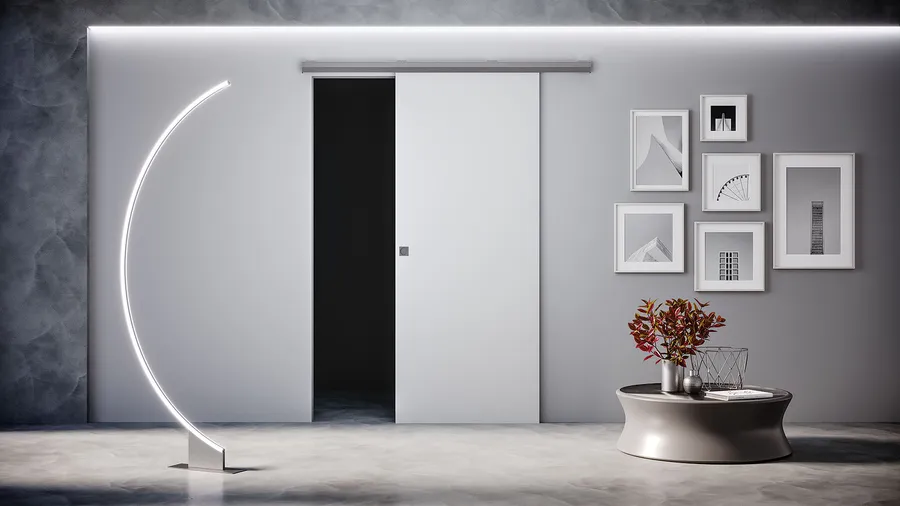Product focus 01/29/2025
External sliding interior doors

External sliding doors are an increasingly popular choice for those who want a sliding door without affecting the masonry. Ideal for optimising space and adding a touch of modernity, these doors adapt to many different living contexts, offering practicality without sacrificing design. In this article, we will explore the main characteristics of external sliding doors, the materials available and the different types on the market.
What are external sliding doors
External sliding doors slides along a track outside the wall, without requiring invasive structural work. Unlike pocket doors, these do not require a counterframe inside the wall, making them easier to install.
The main advantages of an external sliding door include:
- Space optimisation: ideal for confined spaces where a traditional swing door would take up too much space.
- Simple installation: as no structural modifications to the wall are required, installation is quicker and less costly.
- Modern aesthetics: thanks to customisable materials and finishes, an exterior sliding door is perfect for contemporary environments. The Ermetika BinAir product is the perfect solution for this type of requirement. It uses an external wall track installed in the upper part of the compartment to make the door slide comfortably.
Features and properties of external sliding doors
External sliding doors are distinguished by a number of features that make them extremely versatile:
- External track: the door slides along a visible track, often made of aluminium or steel, which can be chosen in different finishes to harmonise with the décor. In the specific case of BinAir, in three colour variants: satin silver, black and satin champagne.
- Customisation: available in various materials such as wood, glass, or laminates, these doors fit any style.
- Easy maintenance: thanks to the visible system, any repairs are quick and easy.

Types of external sliding doors
1. Wooden external sliding door
Wooden doors are a classic and timeless choice. A wooden external sliding door is perfect for those seeking a balance between tradition and modernity. Wood, available in different woods and finishes, lends warmth and naturalness to rooms.
Examples of wood used:
- Oak: for a rustic or modern style.
- Walnut: ideal for classic environments.
- Wood-effect laminates: an economical and durable alternative.
We have already talked about flush sliding doors to separate rooms, read the article!
2. Lacquered external sliding doors
Lacquered doors are the right choice for those who love a minimalist and contemporary design. A white external sliding door, for example, is particularly suitable for modern rooms and small spaces, thanks to white's ability to visually amplify spaces.
Materials used
External sliding doors are a versatile and functional solution for optimising space and enhancing rooms. The materials used in their construction play a fundamental role not only in terms of aesthetics, but also for the performance and durability of the product. Each material offers specific advantages that respond to different needs and stylistic preferences.
- Solid wood: this material, synonymous with elegance and durability, is ideal for those who wish to create a warm and cosy atmosphere. Thanks to its versatility, it integrates perfectly into both traditional and modern contexts, adding a natural touch to interiors.
- Aluminium: with its lightness and strength, aluminium is an excellent choice for supporting structures such as runners and frames. Its ability to resist shocks and deformations makes it particularly suitable for environments with a high frequency of use or for those seeking a minimalist, contemporary design.
- Laminates: laminates are a practical and economical option without sacrificing customisation. Available in a wide range of colours and finishes, they are perfect for those who wish to combine aesthetics and convenience, especially in young, dynamic environments.

How to choose the perfect external sliding door
Choosing an external sliding door requires careful evaluation of several factors, so that the end result is functional, aesthetically pleasing and in line with the requirements of the room.
- Space dimensions: accurate measurement is the essential starting point to avoid installation problems and ensure that the door fits perfectly in the dedicated area.
- Material: the choice of material should reflect the style of the décor and practical needs. For example, solid wood is more suitable for rooms that require warmth and prestige, while aluminium is perfect for modern, minimalist spaces.
- Finish: the aesthetic aspect plays a crucial role. It is important to opt for colours and textures that harmonise with the context, creating visual continuity with the other elements in the room.
- Accessories: functionality can be further enhanced by integrating accessories, such as flush handles, that ensure an integrated solution with the door panel.
External sliding doors are a practical and design-oriented solution for optimising space and enhancing any room. Thanks to their versatility, they lend themselves to multiple configurations and can be customised to meet all aesthetic and functional requirements. Whether it is a wooden exterior sliding door or a white exterior sliding door, these solutions are a winning choice for combining aesthetics and practicality.
Insights:
